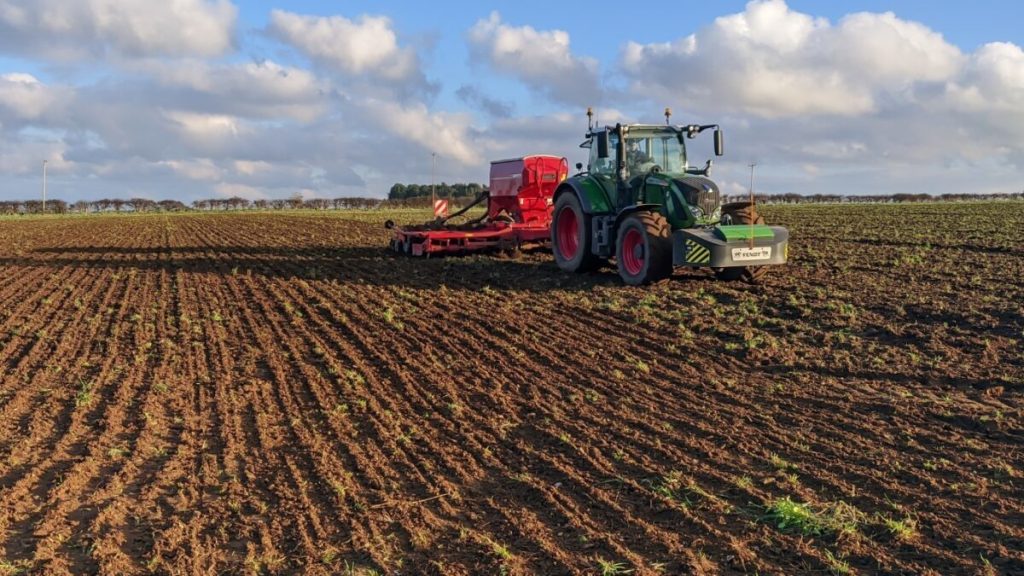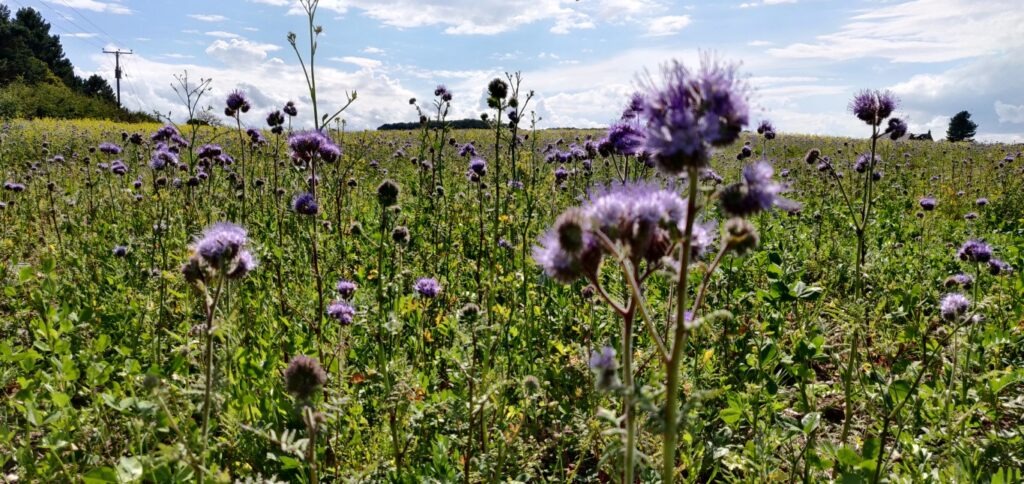
Drilling our first organic wheat crop
Yesterday was a very special day on the farm as we drilled our first organic wheat crop.
This wheat crop is special for a few reasons:
It’s our first organic food crop
This really marks the beginning of our journey into organic and regenerative agriculture, farming sensitively and with the health of our soils and wildlife in mind.
The crop will technically be ‘in-conversion’ rather than full organic status, as organic conversion takes two years, but the crop will be grown with no artificial inputs, as part of a new rotation with two years of fertility building clover leys and undersown cover crops.
To give the wheat the best start we could, we have grown a cover crop on this field with a mix of nine species all designed to promote healthy soil biology, fix nitrogen and add organic matter back into the soil, and spread organic chicken manure on the field at a rate of 10 tonnes per hectare to add more organic matter and nutrients including phosphorus needed for good establishment.
This is the beginning of what will no doubt be a learning experience for us – from weed management to crop nutrition and even how we harvest, process and use the wheat.
We’re growing YQ
Most of the wheat we have drilled is a variety called Siskin, which we could mill, or sell on. We have however also drilled one hectare of ORC Wakelyns Population wheat, also known as YQ (the YQ stands for yield and quality). This population wheat produces a genetically diverse crop which is more resilient to drought, flood and disease and makes a fantastic milling flour. We’re growing a relatively small amount so that we can save our own seed and build our own distinct Deepdale Farm YQ.
Huge thanks to William at Hodmedod’s for pointing us in the right direction to get some YQ wheat seed.
We’re managing most of the field surrounding the crop for wildlife

The way we grow this crop is different as well. We have taken 60% of our land out of production, dedicating it to wildlife – but we’re continuing to farm, on a smaller scale, in simple to manage five-hectare plots within our existing fields. The plots where we are growing wheat will be surrounded by a mix of grasses and flowers to support pollinators and birds.

